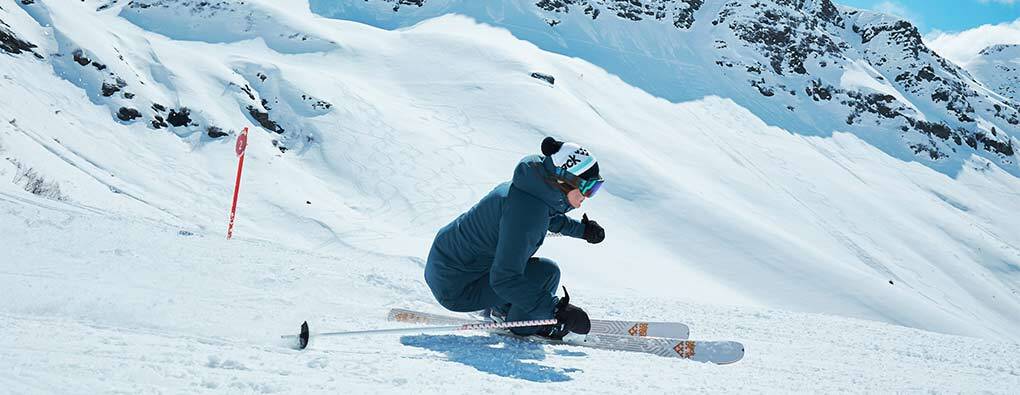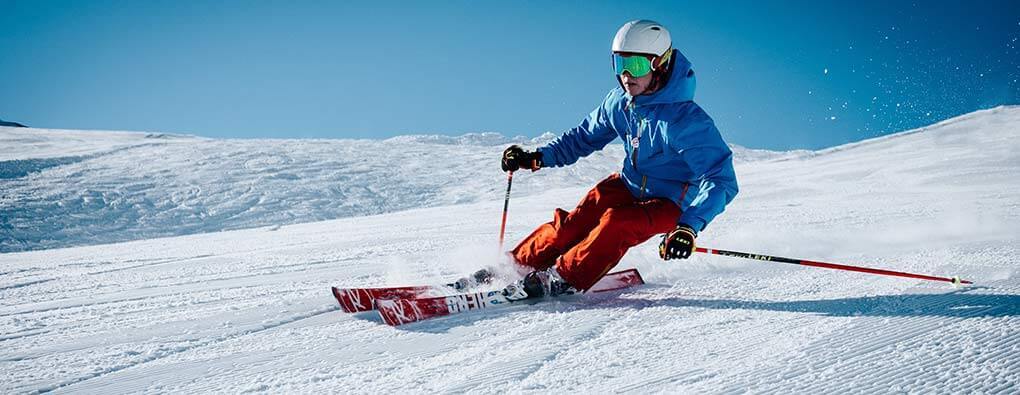Purchasing Skis for Novices
For those just embarking on their skiing journey and looking to buy their initial pair of skis, this guide will steer you correctly. To keep it straightforward, our objective is to help you determine the ideal ski type for you, the suitable length, and provide some extra insight on ski width.
Prior to your final choice, searching within the beginner category for skis that match your skill level is crucial. Such skis are crafted to be forgiving and straightforward in control, typically coming with bindings that are both size-adjustable and user-friendly.
Investing in your pair of skis enables you to become attuned to their feel and responsiveness, offering a significant benefit beyond merely hiring them.
PISTE SKIS - Optimal for Slicing on Groomed Slopes
As implied by the name, these skis excel when used on maintained trails. Novice skiers typically remain on-piste, mastering the fundamentals, making Piste skis an ideal selection. Even as you gain confidence on easier runs, these skis are designed to advance your skills further. The skis are usually narrow, enhancing their capability to grip the snow.
Acquire Your New Piste Skis Here
ALL MOUNTAIN SKIS - The Ultimate Versatile Skis

All Mountain skis are constructed for diverse conditions. While they are excellent on groomed trails, they can also manage some off-piste skiing. If you've had some skiing experience and desire skis not limited to on-piste use, All Mountain skis may suit you. They are crafted with a mix of narrow to moderate widths to combine the ability to grip firm snow on-piste with the flexibility to tackle soft and uneven snow off-piste.
Acquire Your New All Mountain Skis Here
SPECIALISED SKIS
There are also other specialised types such as Park, Racing, Freeride, and Touring skis, generally aimed at more skilled skiers. Should this capture your interest, we suggest exploring our Buying Skis for Experienced Skiers which delves deeper into these options.
Selecting the Appropriate Ski Length
When choosing a ski length, consider your height and skill level. As a novice, opt for skis around the height of your nose. Each model typically comes in several lengths, so choose one that matches your recommended length most closely. Being 3 cm longer or shorter should not pose an issue.
The size guide indicates that newer skiers should select shorter skis to enhance control during the learning phase.
Your weight can also influence selecting the proper size. If your weight significantly deviates from the average, choosing a different length skis may be wise. Heavier individuals should consider a longer length, while lighter individuals might prefer a shorter one.
The image depicts the suitable ski length for a novice skier
| All Mountain/Piste Skis | |
| First-timer | your height -20 cm |
| Beginner | your height -15 cm |
| Intermediate | your height -10 cm |
| Advanced | your height -5 cm |
| Expert | your height |
Ski Width Details
The skis' width can indicate how well they might perform across various terrains. Generally, narrow skis are suitable for firmer snow, while wider ones excel in softer conditions. Ski widths are detailed with three numbers that denote the tip - waist - tail measurements.
The waist measurement, always the middle figure, offers the most crucial detail. For example: 132/78/113
This specification is included on our website for each ski model.
Skis with waist widths between 70 to 82 mm are well-suited for predominant on-piste skiing, optimised for gripping firm snow. These are particularly beneficial for beginners.
Additional Ski Equipment
Ski Boots
Ski boots are arguably the most critical piece of gear to purchase when planning a ski trip. You'll find everything you need to start in the Buying Ski Boots Guide, but here are some foundational insights.
Ski boot sizes are measured in centimetres, indicating the entire length of your foot from heel to toe. Determine your true size by measuring your feet with a measuring tape or ruler. Besides sizing, boots are rated by flex value, showing how pliable the outer shell is. Ideally, a beginner should choose boots with a flex between 60-90 for ease. Explore more information in the Boot Flex Guide.
Tip: Are your ski boots causing discomfort? Ensure your ski trousers are not inside your boots. Only your foot and a long ski sock should be within. Quality ski socks can prevent blisters, discomfort, and even cold feet.
Ski Poles
Ski poles are essential for forward movement on flat areas and enhancing balance. A small round disc near the bottom prevents poles from sinking too deeply into the snow. The Ski Pole Length Size Chart could help you determine the appropriate pole length, based on your height.
Helmets
Nowadays, helmets are worn by most skiers, from beginners to seasoned professionals. They provide warmth but, more importantly, safeguard your life. Ski helmets are crafted for multiple impacts, offering protection distinct from skate or bike helmets, which are unsuitable alternatives.
You might want to learn more on Proper Helmet Usage or Helmet Lifespan.
Goggles
Wearing goggles can undeniably enhance your skiing experience. They shield your eyes from glaring sunlight, fierce wind, and snow, enhancing your overall vision. For further details, see our Comprehensive Ski and Snowboard Goggles Guide.



